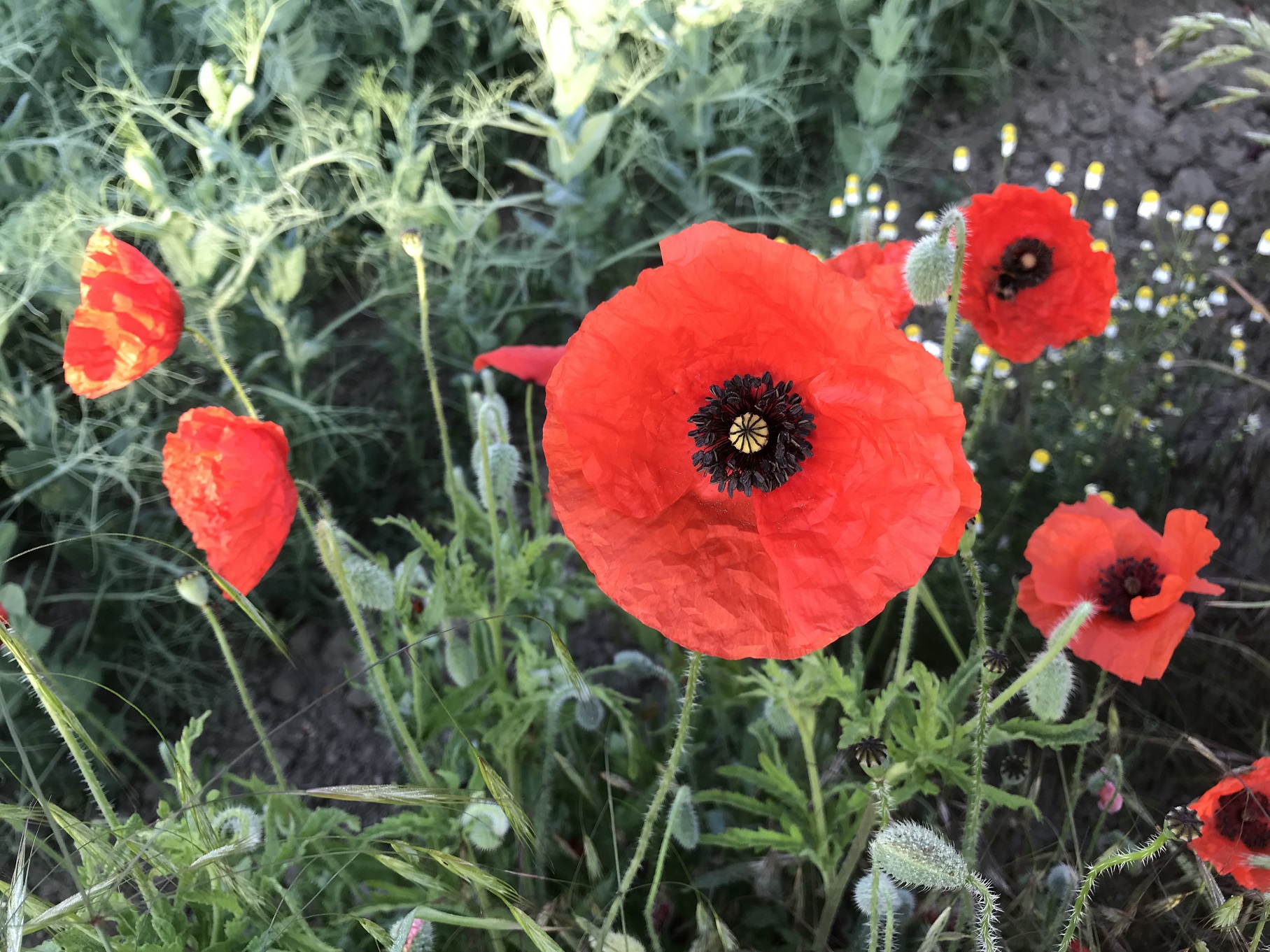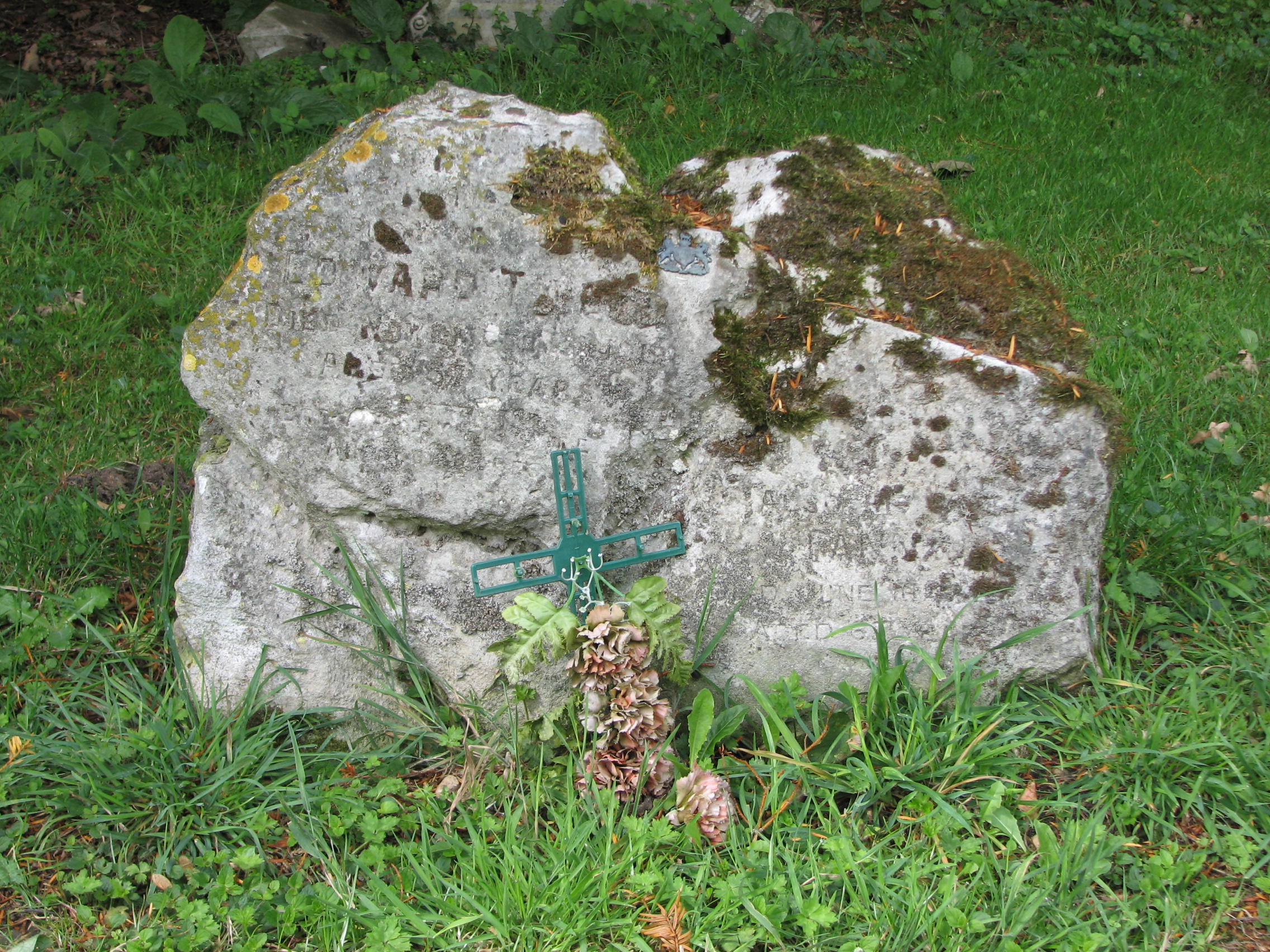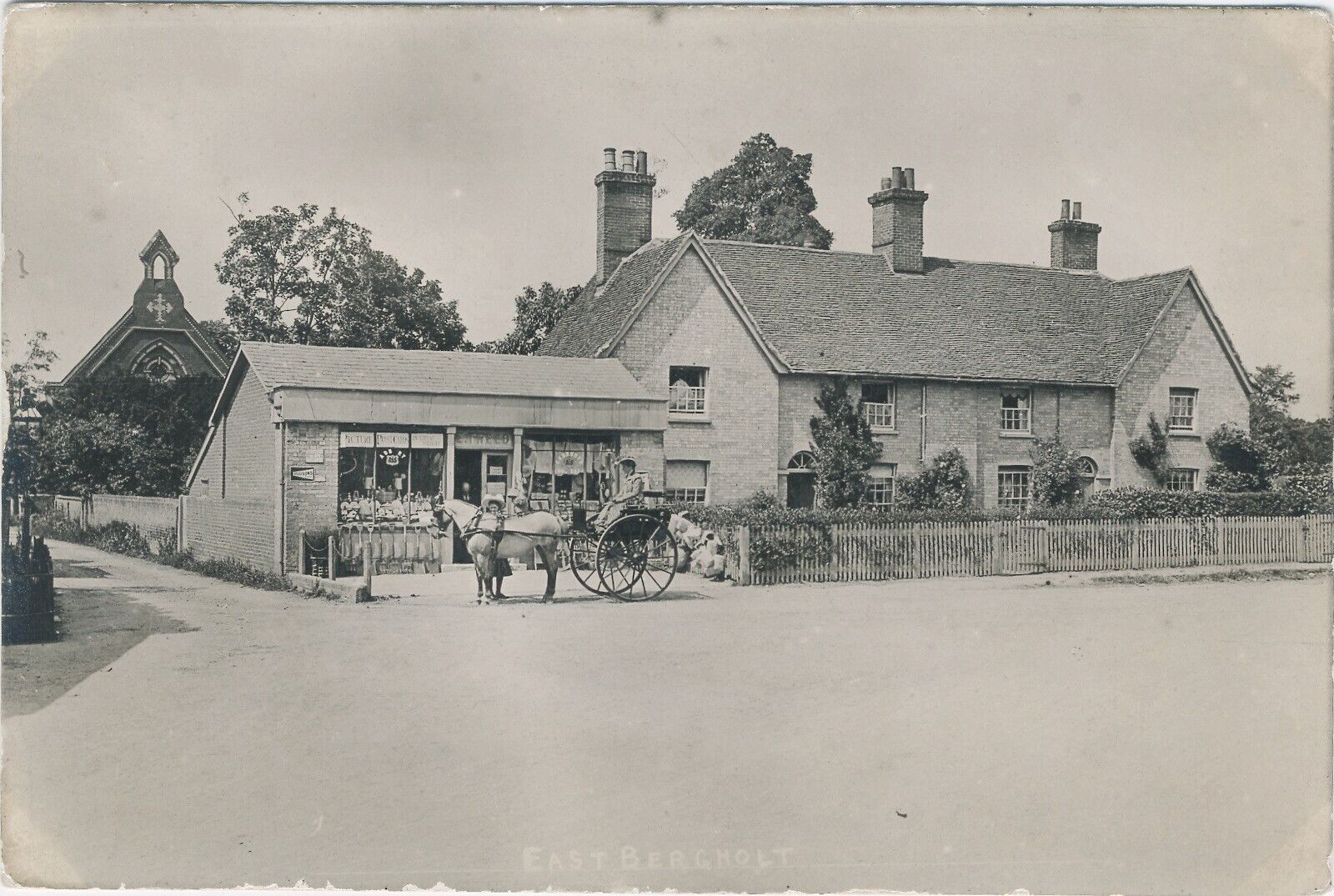Edward Tweed (1862 - 1919)
Edward ran the shop in the centre of the village. After the outbreak of War, like many men too old to serve in the regular Armed Forces, he joined the Volunteer Training Corps.
- 64
- Died in the Great War
- 51.971463, 1.011005
Details
| Name: | Edward Tweed |
| Service: | Volunteer Training Corps |
| Unit: | 4th Volunteer Battalion, Suffolk Regiment |
| Number: | 145312 |
| Rank: | Private |
| Date of Death: | 13th November 1919 |
| Age: | 57 |
| Buried: | East Bergholt Cemetery |
Edward is the only man commemorated on the village Memorial to Those Who Died in the Great War, who was not a member of the regular armed forces. 1 As a member of the Volunteer Training Corps, Edward is not officially classed as one of the war dead and is therefore not commemorated by the Commonwealth War Graves Commission. He is also the only man commemorated on the Memorial to Those Who Died in the Great War who is not also remembered on the Roll of Honour to the East Bergholt Men Who Served.
Family Background and Early Life
Edward Tweed was born at Manningtree on 27th October 1862, one of at least 8 children of John Ainger Tweed and his wife Ann (nee Riches).
John Tweed was a Master Baker in Manningtree, where the family lived on South Hill. He had been born in the nearby village of Bradfield, whilst Ann may have hailed from Brightlingsea. The family lived on South Hill.
The 1881 Census shows that 18 year old Edward was employed as an Accountant, and was a Boarder at Church Road in Cannonbury, London. Whether this was a permanent arrangement is not known, but certainly by the late 1890s Edward was a resident in Manningtree.
Marriage and a move to East Bergholt
On 10 May 1899, 36 year old Edward married 34 year old Fanny Walker at St Andrews Church in Fulham. Edward and Fanny made their marital home in East Bergholt, where they lived initially on Cemetery Lane before later moving to Chapel House. Edward ran the shop next door which was primarily an Ironmongery, but also appears to have sold China and a Drapery as well.
In 1901 Fanny gave birth to their daughter, who they called Edith Mary. Sadly, Edith died when she was only a year old, and Edward and Fanny would have no more children.
The Volunteer Training Corps
After Great Britain had declared war on Germany on 4th August 1914, following the latter’s invasion of neutral Belgium, there was a popular demand for a volunteer force to assist in the defence of the country. The matter was pressed so strongly that the War Office reluctantly authorised “lessons in drilling and musketry” for men over age or unfit for regular military service. These groups came together under the Central Association of Volunteer Training Corps.
The Volunteer Training Corps in Suffolk came into being in the winter of 1914/15. Like their national counterparts, they were to be entirely self-financing and until 1916 the only government issue that they received were red “G.R.” brassards that they were to wear when on duty.
The various Corps in Suffolk were grouped initially into 6 Battalions, which roughly followed the Parliamentary divisions. The East Bergholt Volunteer Corps thus became part of the 4th Volunteer Battalion of the Suffolk Regiment. This drew its volunteers from the district roughly corresponding with the Woodbridge constituency, which at that time included East Bergholt.
Despite being over the age for service in the regular armed forces, Edward was one of the men who joined the East Bergholt Volunteer Corps, though – given the vagaries of the official War Office records relating to the Volunteer Training Corps – it is not entirely clear exactly when he did join.
Surviving papers show that he enlisted as a Private in the 4th Battalion of the Suffolk Volunteer Regiment on 2nd July 1916. However given that this was the date when the War Office decided that the volunteers should be formally attested under the old Volunteer Act of 1863, it is quite likely that he joined before then.
Duties
Since 1915, some of the VTC had been employed in guard duties at some of the bridges on the Great Eastern Railway, or at munitions factories in Ipswich. In the crisis of 1918, when there was an acute shortage of manpower because of the German Spring Offensive, approximately 350 Suffolk Volunteers undertook a 3 month tour of coast defence duties in East Anglia, thus allowing members of the regular Army usually engaged in those tasks to be sent across to France.
Edward seems to have been one of those men called upon, and therefore may well have spent at least some of the summer of 1918 engaged in coast defence duties.
Surviving documentation does not detail the exact course and cause of what happened, but on 26th September 1918, Edward was admitted to the Norwich Asylum suffering from some sort of mental illness.
At the start of September 1919, the authorities awarded Fanny a small allowance, as a result of Edward’s service in the Volunteer Corps.
Edward died of heart disease on 13th November 1919, at the Suffolk District Asylum at Melton, near Woodbridge, aged 55. He was buried in East Bergholt Cemetery on 20th November 1919. Upon his death, the allowance that the authorities had been paying to Fanny, ceased.
Postscript
Fanny remained living in East Bergholt until she passed away in 1928. She was buried with Edward in the village cemetery.
Copyright © Mark Ashmore, 2024
- 64
- Died in the Great War
- 51.971463, 1.011005



